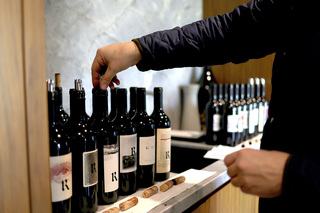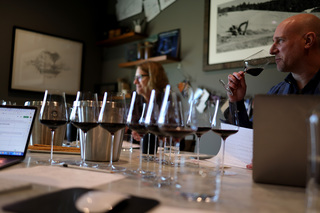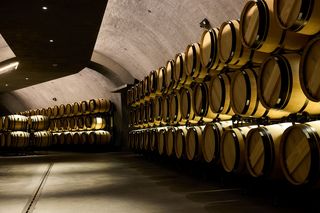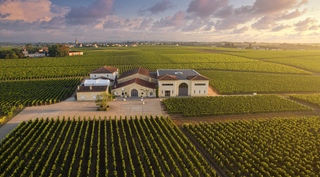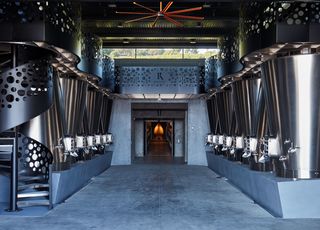This spring, we will do something we haven’t done since the restart of the brand in 2012: release a substantial inventory of library wines. In 2012, it was about survival. The business was on the precipice of bankruptcy, and we needed to sell everything we could in order to continue. In 2023 the situation is thankfully more stable. We are in better shape today than ten years ago, yet the complete loss of our 2020 vintage due to the wildfires in Napa Valley is admittedly a massive strain on the business. But the library release is about much more than just navigating the loss of 2020. It’s a chance to offer our members something unique, a retrospective of our work over the past decade.
We reviewed our cellar inventory and came up with over 70 library wines going back to 2009. Since we hadn’t tasted some of the older wines in a while, we staged a tasting of all the vintages to ensure each wine delivers the high standard of quality to which we hold ourselves. In some vintages we had only 1.5L or 3L formats remaining in our cellar, so we purchased that same wine in 750mL format from the secondary market. (We didn’t want to open 3L bottles for tasting because that would only reduce the available inventory!) We wouldn’t sell a bottle of 2009 Beckstoffer To Kalon in 3L, for example, not having a sense for what it tastes like today. We owe our members more than that.
The date was set: the tasting took place over two days, December 21 and 22, 2022, in the library at Realm Cellars. Ten vintages, seventy-three wines, approximately ten hours of tasting. Four people: Scott, Benoit, Jonathan Cristaldi, the Napa correspondent for Decanter, and Mora Cronin, our long-time copywriter. A logistical feat only to be outdone by the challenge of the spring release itself. To ensure a level playing field, we did not decant any of the wines, just opened the bottles, poured and tasted. We took our time with each wine to reflect, update tasting notes, and try to put context around each one.
Even before a cork was pulled, we anticipated this tasting would reveal not only the profiles of the wines but to an extent, the history of Realm itself. We were not disappointed. Tasting wines going back to 2009 was a trip down memory lane, a reminder of where Scott and Benoit were in 2011 and 2012 when Realm 2.0 began.
Scott: “When you taste through this progression, it’s less about the vintages and more about what was happening at the time. In a relatively short period we went from near-insolvency to owning our own land and winery. It’s fascinating to see how that shows up in the wines.”
The stories and reflections abounded. Scott remembers paying for the bottles, labels and corks for the bottling of the 2010 vintage in June 2012 before he even signed the deal to acquire Realm. All of the Realm vendors at the time required payment up front, and things were tight in the business. He didn’t own the wine yet, but he went all-in on Realm, a leap of faith. Benoit remembers tasting through the early vintages with his mentor Michel Rolland and hearing him say, “Your wines could be better. Get back to work.” Realm declassified many barrels from those early vintages.
There was the 2011 vintage, widely panned by critics, and a low point for Realm when the wines were reviewed, but in our tasting, the wines showed beautifully. It was a reminder that even in supposedly poor vintages, great wines can be produced. They simply may need more time in bottle.
Then 2012, a fine vintage by all accounts, although Realm still declassified 32 out of 230 barrels. It was painful, but the right thing to do. The 2012s Realm bottled were special – they still are – and when the wines were reviewed favorably in 2014, Realm started to gain traction. It was definitely a turning point.
In the meantime though, there was work to be done. As Realm gained solvency and traction over the next couple of years, we were able to add new vineyard sources and buy better barrels. Always refining, Benoit pulled back on barrel fermentation and began fermenting in stainless steel at cooler temperatures and experimenting with concrete. We started picking fruit earlier, seeking a fresher style of wine. The 2013 and 2014 vintages were solid, and the market reception was positive, which kept us growing.
Then in late 2015, a leap forward with the acquisition of the Hartwell property, including a winery and 20 acres of vineyard we could finally call home. 2017 brought wildfires and reduced yields, but the wines produced that year are strong. In 2018 another milestone with the partnership of Realm and Frank Farella, giving us a second Estate vineyard and farming control over Farella Vineyard.
Better vineyard sourcing, more control in the cellar, new equipment, better barrel storage, and ultimately, owning and farming our own vineyards – it all shows in the wines we tasted from 2012 onward, with each vintage an improvement upon the last. Even as we’ve grown production of The Bard, the wine has remained one of the most exciting in our portfolio, a benchmark wine that continues to “punch above its weight.” The tasting showed how our Beckstoffer To Kalon, ever a beacon of Napa Valley quality, has evolved as we’ve recognized the diversity within the vineyard. Vintners used to treat To Kalon as a monolith, but we’ve learned that an 89-acre vineyard is not the same throughout. We’re peeling back the layers, following veins of ancient rivers and beams of sunlight that give this vineyard its reputation. And no matter the vintage, this tasting proved once again that Beckstoffer Dr. Crane is always a revelation; in each successive flight Dr. Crane stopped us in our tracks and made spitting seem like heresy.
The importance of our growing Estate portfolio emerged through the tasting. We could literally taste the progression in Moonracer and Farella, both wines showing more precision in recent vintages as we get our hands and heads around the farming. Some of the earlier vintages of Farella, going back to 2010 and 2011, showed up as the sleeper of each flight – meaning surprisingly strong! We weren’t expecting it, but these wines exuded pure class and Cabernet character. Tasting older vintages of Farella, Moonracer and Houyi captured perfectly one of Shakespeare’s more quotable idioms, “What’s past is prologue …” We could not be more excited about the future of our Estate wines!
In addition to a chronicling of Realm, this tasting reminded us of the trajectory of Napa Valley wines over the past two decades. In the 2000s, still in the prime of the so-called cult era of Napa Valley, there was a formula: crop at two tons per acre, pick the fruit ripe, bleed some of the wine off the skins, maybe leave a hint of residual sugar, and barrel ferment in 100% new French oak. It was the style of that era (though to be clear, not all producers followed this path), and it was successful. But somewhere around 2010, a new era of Napa Valley emerged. People started looking for more freshness and finesse in the wines. You can taste this evolution in the Realm wines as we move from 2012 and 2013 to 2018 and 2019. From one year to the next, the evolution is small, but the cumulative effect is unmistakable. Today we’re opting for farming and winemaking techniques that produce fresher bottlings with more precision, wines that hopefully are less about ripeness and opulence and more about expressing the nuance of their origins. Wines that combine richness and freshness.
Benoit: “I love Realm’s older wines, and I think they still provide immense pleasure. But the evolution of our wines in the last decade is both gratifying and fascinating. Today I’m looking for purity and transparency, expressive wines that can easily age thirty years or more. That’s the Holy Grail.”
